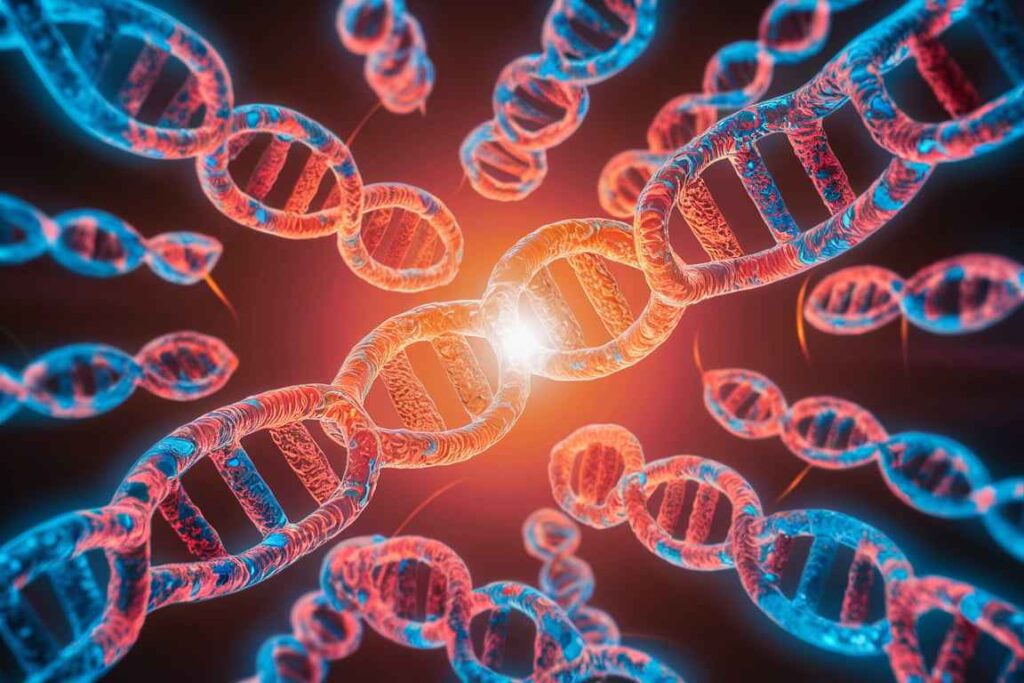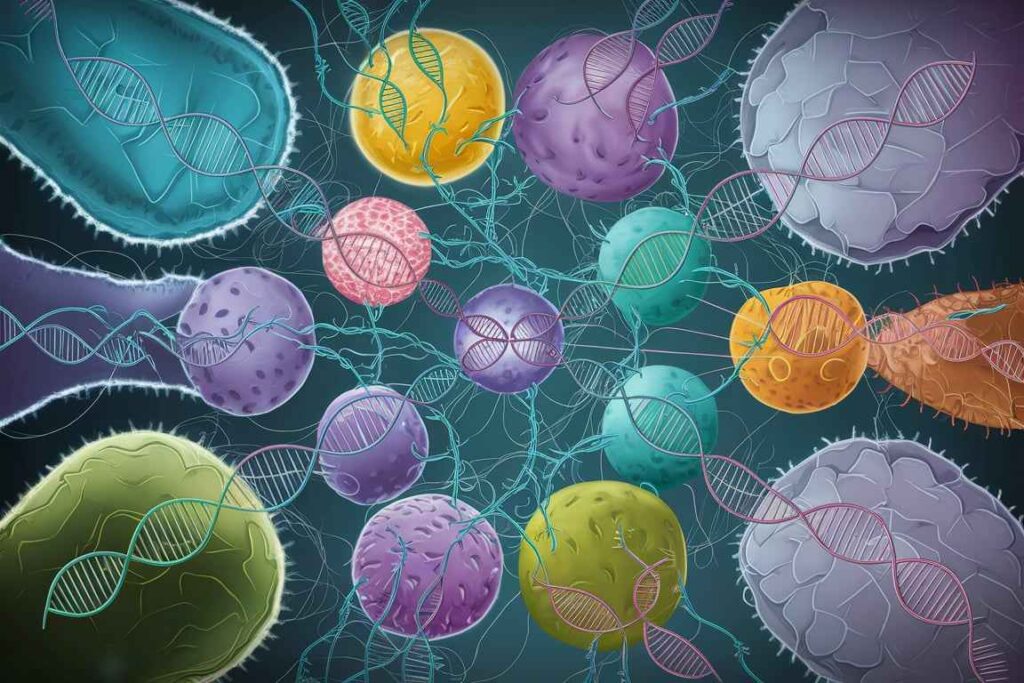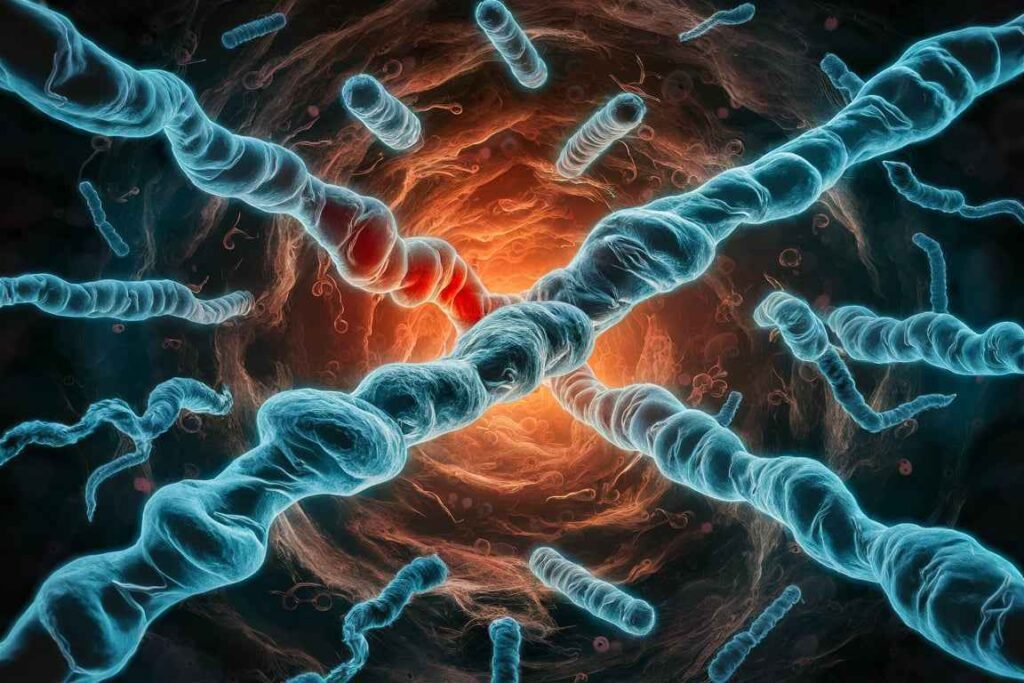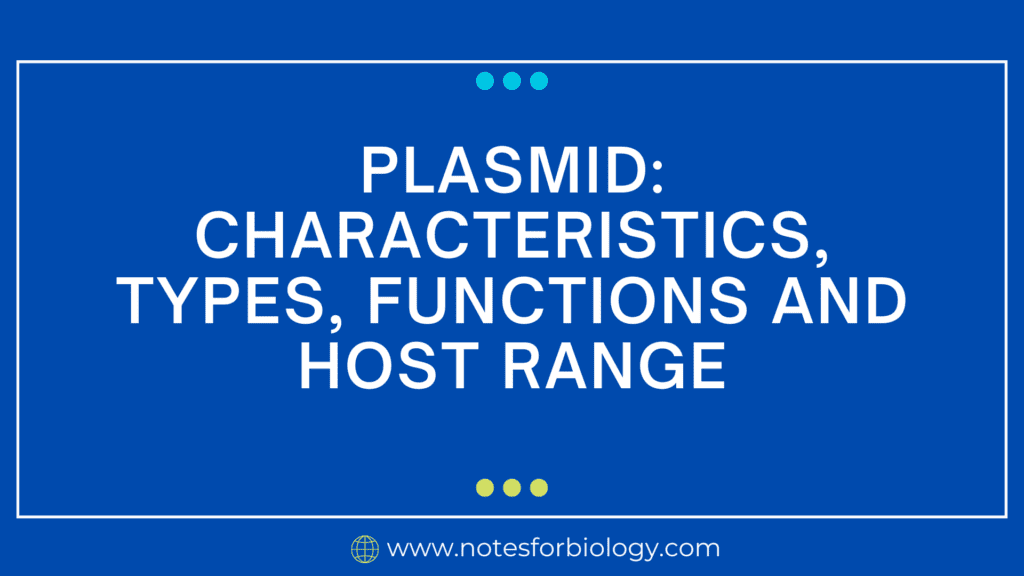Plasmids are adaptable genetic components that serve a variety of roles, including antibiotic resistance, metabolic adaptation, and virulence enhancement. Their capacity to move across bacteria and proliferate autonomously makes them essential instruments in molecular biology, biotechnology, and environmental science. Understanding its features, kinds, activities, and host range is critical for realizing their full potential in scientific and medicinal applications.
Table of Contents
Characteristics

- Extrachromosomal DNA: They are DNA molecules separate from the chromosomal DNA, often circular and double-stranded.
- Autonomous Replication: It replicate independently of the chromosomal DNA using their own origin of replication.
- Variable Size: They range in size from a few kilobases (kb) to several hundred kb.
- Copy Number: Varies from one per cell (low-copy) to several hundred (high-copy ).
- Transferable: Many of them can be transferred between cells through processes like conjugation, transformation, or transduction.
Types
Conjugative :

- Carry genes for transfer between cells via conjugation.
- Example: F plasmid in Escherichia coli, which contains genes for pilus formation and DNA transfer.
Non-conjugative :
- Lack transfer genes and cannot initiate conjugation independently.
- Can be transferred with the help of conjugative.
Resistance (R):
- Carry antibiotic resistance genes.
- Example: R100 plasmid, conferring resistance to multiple antibiotics.
Virulence :

- Carry genes that enhance the pathogenicity of the host bacterium.
- Example: pXO1 and pXO2 plasmids in Bacillus anthracis, encoding toxins and capsule formation.
Degradative :
- Enable bacteria to metabolize unusual substances.
- Example: TOL in Pseudomonas putida, allowing the degradation of toluene and related compounds.
Col Plasmids:
- Encode bacteriocins, proteins that kill other bacteria.
- Example: ColE1 plasmid in E. coli, producing colicin E1.
Cryptic Plasmids:
- Do not have any identifiable genes or functions apart from replication.
- Example: pUC used in cloning.
Functions
Antibiotic Resistance:
- They can carry genes that provide resistance to antibiotics, enabling bacteria to survive in environments with antibiotics.
- These genes can encode enzymes that degrade antibiotics, modify antibiotic targets, or pump antibiotics out of the cell.
Virulence Factors:
- Genes on virulence plasmids can encode toxins, adhesion factors, and other proteins that increase the ability of bacteria to cause disease.
- For example, enterotoxin genes on its can cause diarrheal diseases.
Metabolic Functions:
- They can carry genes that enable the host bacterium to metabolize unusual compounds, aiding in the adaptation to specific environmental niches or in bioremediation.
Bacteriocin Production:
- Some of them encode bacteriocins, which are proteins that kill or inhibit the growth of closely related bacterial species. This provides a competitive advantage to the host bacterium.
Gene Cloning and Expression:
- They are used as vectors in genetic engineering to clone, express, and manipulate genes. They often contain selectable markers (e.g., antibiotic resistance genes) and multiple cloning sites for easy insertion of foreign DNA.
Host Range
- Antibiotic Resistance: Provide resistance to antibiotics, helping bacteria survive in hostile environments.
- Virulence Factors: Enhance bacterial virulence by encoding toxins, adhesins, and other pathogenic factors.
- Metabolic Functions: Enable the degradation of unusual compounds, aiding in bioremediation and environmental adaptation.
- Bacteriocin Production: Allow bacteria to produce substances that inhibit the growth of competing bacterial strains.
- Gene Cloning and Expression: Widely used as vectors in genetic engineering to clone, express, and manipulate genes.
Narrow Host Range :
- Replicate in a limited range of bacterial species.
- Example: pBR322 plasmid, typically replicating only in E. coli and closely related bacteria.
Broad Host Range:
- Capable of replicating in a wide variety of bacterial species.
- Example: RK2 plasmid, capable of replication in many Gram-negative bacteria.
Frequently Asked Question
Define Plasmids.
Plasmids are adaptable genetic components that serve a variety of roles, including antibiotic resistance, metabolic adaptation, and virulence enhancement. Their capacity to move across bacteria and proliferate autonomously makes them essential instruments in molecular biology, biotechnology, and environmental science.
What are the functions of Plasmids ?
The functions of Plasmids are:
1. Antibiotic Resistance
2. Virulence Factors
3. Metabolic Functions
4. Bacteriocin Production
Related Article
Different approaches for Fungal Disease Diagnosis: Clinical, conventional and molecular approaches




